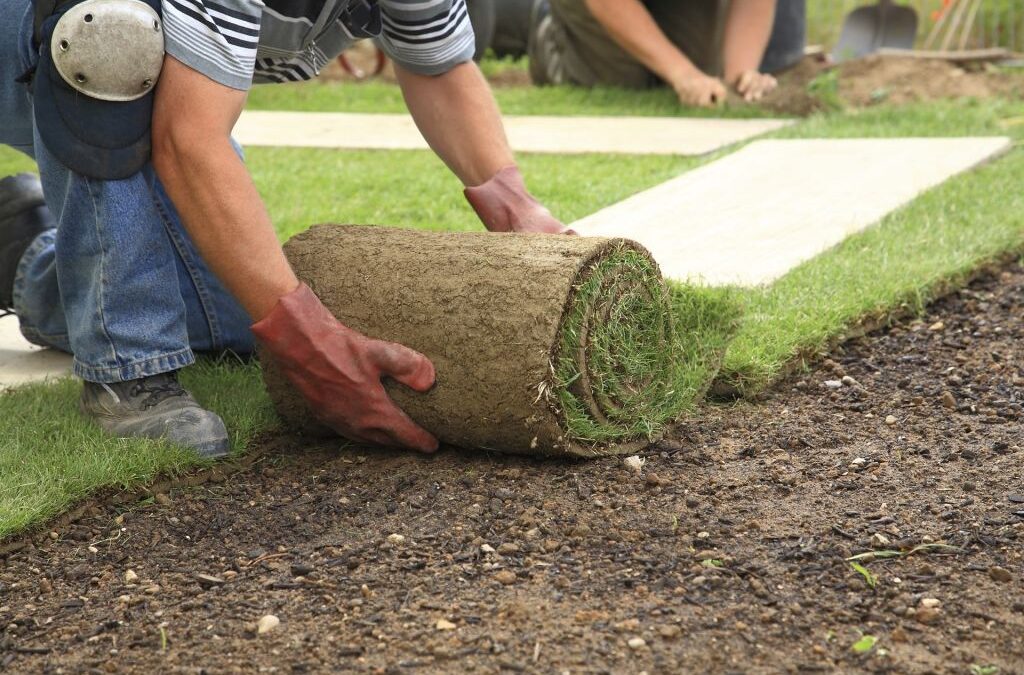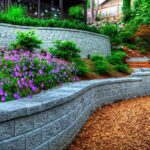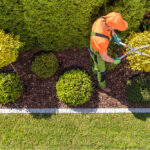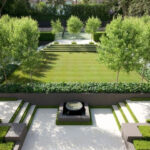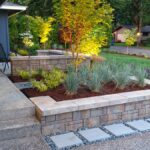9 Landscaping Tips for Beginners in Minneapolis, MN
If you’ve just purchased your first home and are ready to put in some outdoor landscaping, you might be overwhelmed by all the choices you see at a local nursery for plants, hedges, shrubbery, trees, and flowers.
You might also wonder how some homeowners manage always to have beautiful outdoor spaces that are healthy and lush and which look meticulously planned, while other homeowners have bland and dull plants and flowers that are always somewhat droopy and sickly!
To ensure your new home’s exterior space looks its best, consider a few tips that any beginner can use in their first yard.
9 Landscaping Tips for Beginners in Minneapolis, MN
Tip #1: Know Your Soil!
Not every flower and shrub will bloom and blossom in the same soil, and good dirt is one essential key to healthy plants.
Having your property’s soil tested will tell you exactly what needs to be done to support certain plants, but you can check the dirt’s condition yourself by digging a hole in your yard, just a few inches deep, and manually examining the soil.
Is the dirt sandy and dry with lots of rocks, overly moist and muddy, or does it resemble healthy potting soil?
Once you’ve examined your property’s soil, you can treat it with various additives, to bring in more moisture or remove some moisture from those lower layers of soil.
You can also change the types of plants and greenery you were going to add to your landscape!
For example, if the ground is parched, consider irises, lavender, or foxtail lilies. If the soil is overly moist, plant camass lily, butterfly weed, and ferns.
Tip #2: Check the Shade and Sunlight
As with soil conditions, some plants need lots of sunlight while others fare better in shady conditions.
Many plants will do well with some sun but may wither if they’re exposed to hot, bright sunlight for many hours every day.
When checking the available sunlight in the spots where you’ll add new landscaping, be sure to note how the sun moves across the sky during the day, and if that area will be obscured by trees, a large fence, the garage, and of course your house itself!
You might need to prune some trees that would block too much sun on your property; otherwise, you’ll need to choose plant varieties that work well according to the amount of sunlight they will receive throughout the day.
Tip #3: Use the Rule of Three
Plant flowers and shrubs alongside the home in layers of three rows.
These multiple rows add depth and help to break up the look of each type of plant or flower you choose.
A single row of flowers or shrubs might look dull, and two varieties may not offer enough contrast and depth to stand out, so pick three separate types of plants to add against the house.
It’s good to start your three rows with something tall and green, to provide a backdrop for flowers and to add contrast between the house and your landscape design.
Add plants or flowers of medium height in front of these greens, and then you might add bright and bold flowers in the front row, for maximum visual appeal.
A small landscaping border in front of this last row will add separation between those plants or flowers and your property’s lawn.
Related: How To Use Mulch to Keep Your Property Looking its Best
Tip #4: Contrast the Shape of Flowers and Shrubs
Flowers, shrubs, and other greenery all have a particular shape and silhouette, and it’s good to mix these up in your plantings, to add contrast and visual interest.
Added variation is especially suitable for long rows of plantings, so all those greens and flowers don’t blend in with each other.
As an example of how to do this, you might add square and manicured boxwood hedges close to the house, then maiden grass in front of these hedges.
Maiden grass has a soft texture and rounded shape so that it will stand out from the hedgerows.
In front of the maiden grass, you might add a row of petunias or sword foliage.
These flowers grow to be very thick and full, which will contrast the spikier maiden grass.
Whatever your choice for plantings, mix up the shape of flowers and greenery, rather than only choosing tall and spiky grasses or rounded shrubs, so everything stands out and looks its best.
Tip #5: Consider the Style and Color of your House
Specific landscaping ideas work well with particular house styles and colors, whereas other types of greens and flowers might seem out of place next to certain homes.
For instance, asters, daisies, lily of the valley, and peonies are all common in English gardens, so they may seem a bit quaint outside a modern home with square, clean lines.
Roses are very traditional and often work well outside a brick home, except red roses might blend in with red brick and virtually disappear!
Try to match your home style with the plants and flowers you choose; a few minimal ferns or a Japanese maple tree can be an excellent option for a modern home, while lavender bushes can add charm to a cottage house.
Use white and yellow flowers outside a red home, and dark green shrubbery species along with yellow, red, or purple flowers outside a white house.
Tip #6: Choose a Focal Point
Adding some greens and flowers next to a home is an excellent choice for bringing color and style to your property, but you might also add a focal point in the space.
This focal point can be a tree you plant in the middle of the yard, or a bench around which you add more flowers and shrubbery.
A focal point can add personality to your property, but it can also work to break up “dead” spaces, meaning areas of the yard that seem dull and bland and without much function.
A dead space might include a far corner of your backyard, or an empty spot of your front yard near the sidewalk, where there isn’t much visual interest.
Plant a landscaping tree and add some stacks of paver stones around it, or choose a fun piece you can place in the yard, such as an old wheelbarrow or washtub, and fill it with flowers, for a bit of color and unique touch in these spaces.
Related: 7 Landscape Maintenance Practices Homeowners Should Know
Tip #7: Be Careful of Spacing
Placing flowers and greenery very close together can create a lush, full look for your landscaping ideas, but adding too much greenery in a small space, or not adding space between all your plants and flowers, can mean a crowded and unplanned look.
The larger the plants, the more area you might add between them, with shrubbery and hedges being the only exception.
It’s also good to allow some space for adding mulch or landscaping rocks around your plantings.
Mulch keeps the ground well-watered and healthy, and stones can add texture and depth to your plant beds.
Rocks can also break up the look of your flowers and greens, creating a contrast between these features and your property’s lawn.
Tip #8: Choose Plants that are Functional, Not Just Beautiful!
If you need to add privacy between you and your neighbors, consider adding a row of tall boxwood hedges or hydrangeas, lilacs, and other such thick shrubberies along the border of your yard.
These greens can create a beautiful wall around your space and also block out sound.
If you’re concerned about home security, add shrubs or flowers with prickly thorns under the house’s first-floor windows, to keep intruders from hiding in those spaces.
Yards with drainage issues might benefit from river reeds, as these plants absorb water and keep it contained in one particular area of the lawn.
If you notice an unpleasant odor outside your home, such as from a nearby production facility, dog park, algae-covered lake, and the like, plant lots of fresh-smelling flowers and bushes, such as lilac, sage, thyme, lemongrass, and lavender.
Tip #9: Work with a Professional Landscaper in Minneapolis, MN
Even if you have some favorite flowers you want to plant in your new space and have chosen a landscape design you’ll follow for your plants and flowers, it’s still good to work with a Minneapolis, MN professional landscaper.
He or she can check the drainage of your property and note if your plants would cause soil erosion, or if those plants would hold too much moisture in the soil.
A landscaper can also ensure that your property is adequately watered, to support your new flowers and shrubs.
A professional can also find you the best landscape supply company or provide you with the proper tools you need to maintain your lawn and landscaping features.
Using the right tools for the job can make planting and keeping your shrubs and flowers much easier, and also ensure that you don’t tear up your property’s grass or damage your household tools for the work you’ll be doing.
Working with a landscaper in Minneapolis, MN can then ensure that your new exterior features are always healthy and lush and that you enjoy your new home and outdoor space.

